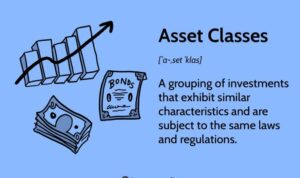Ready to dive into the world of Retirement investment strategies? Buckle up as we explore the ins and outs of planning for your golden years with savvy investment moves that can secure your financial future.
Let’s break down the key elements of retirement investment planning and guide you through the options that best suit your individual needs.
Introduction to Retirement Investment Strategies
When it comes to securing your future, retirement investment planning is key. By setting aside funds early on, you can build a nest egg that will support you during your golden years. Let’s dive into the importance of retirement investment strategies, the benefits of starting early, and some common options to consider.
Importance of Retirement Investment Planning
Planning for retirement is crucial to ensure financial stability when you no longer have a regular income. By investing wisely, you can grow your savings over time and protect yourself against inflation. It’s never too early to start planning for retirement, as the power of compounding can significantly increase your wealth.
Benefits of Early Retirement Investment Strategies
Investing in your retirement early on allows you to take advantage of the long-term growth potential of your investments. By starting young, you can weather market fluctuations and build a substantial nest egg over time. Additionally, the earlier you start, the less you’ll need to save each month to reach your retirement goals.
Common Retirement Investment Options
- 401(k): A popular employer-sponsored retirement plan that allows you to contribute a portion of your salary and enjoy tax benefits.
- IRA (Individual Retirement Account): A tax-advantaged account that allows you to save for retirement independently of your employer.
- Stocks and Bonds: Investing in the stock market or bonds can provide opportunities for growth and income, but also carry risks.
- Mutual Funds: Pooling your money with other investors to invest in a diversified portfolio managed by professionals.
- Real Estate: Owning rental properties or real estate investment trusts (REITs) can provide a source of passive income in retirement.
Types of Retirement Investment Accounts
When it comes to saving for retirement, there are several types of investment accounts to consider. Each has its own unique features and benefits, so it’s important to understand the differences before deciding which one is right for you.
401(k)
- A 401(k) is a retirement account offered by employers to help their employees save for retirement.
- Contributions to a traditional 401(k) are made with pre-tax dollars, reducing your taxable income for the year.
- Employers may match a portion of your contributions, which is essentially free money added to your retirement savings.
IRA (Individual Retirement Account)
- An IRA is a retirement account that you set up on your own, separate from your employer.
- There are two main types of IRAs: traditional and Roth. Contributions to a traditional IRA may be tax-deductible, while contributions to a Roth IRA are made with after-tax dollars.
- IRAs offer a wide range of investment options, giving you more control over how your money is invested.
Roth IRA
- A Roth IRA is a type of retirement account that allows you to make contributions with after-tax dollars.
- One of the main benefits of a Roth IRA is that qualified withdrawals in retirement are tax-free.
- Roth IRAs also have fewer restrictions on withdrawals compared to traditional IRAs.
Choosing the Right Retirement Account
- Consider your current tax situation and future tax outlook when choosing between a traditional and Roth account.
- If your employer offers a 401(k) match, take advantage of this free money to boost your retirement savings.
- Review the investment options and fees associated with each account to ensure they align with your financial goals.
Diversification in Retirement Investments
When it comes to retirement investing, diversification plays a crucial role in managing risk and maximizing returns. Diversification involves spreading your investments across different asset classes to reduce the impact of market fluctuations on your portfolio.
Importance of Diversification for Retirement Portfolios
Diversification is essential for retirement portfolios because it helps minimize the risk of significant losses due to the performance of a single asset class. By diversifying your investments, you can potentially achieve a more stable and consistent growth over time, protecting your savings from volatility in the market.
Examples of Diversifying Retirement Investments Across Asset Classes
- Stocks: Investing in a mix of large-cap, mid-cap, and small-cap stocks can provide exposure to different sectors and industries.
- Bonds: Including a variety of bonds such as government, corporate, and municipal bonds can offer a balance between risk and return.
- Real Estate: Adding real estate investment trusts (REITs) or rental properties to your portfolio can diversify your assets beyond traditional stocks and bonds.
- Commodities: Allocating a portion of your investments to commodities like gold, silver, or oil can serve as a hedge against inflation and economic uncertainty.
Risk Management in Retirement Investments
When it comes to retirement investments, managing risk is crucial to ensure a secure financial future. By implementing effective strategies to mitigate risk, investors can protect their savings and maximize returns. Understanding your risk tolerance is also key in making informed investment choices. Balancing risk and return is essential in constructing a well-diversified retirement investment portfolio.
Strategies to Manage Risk in Retirement Investments
- Diversification: Spread your investments across different asset classes to reduce the impact of market fluctuations on your portfolio.
- Asset Allocation: Allocate your funds strategically based on your risk tolerance, time horizon, and financial goals.
- Regular Monitoring: Keep track of your investments and make adjustments as needed to align with your risk tolerance and objectives.
- Use of Derivatives: Utilize options, futures, and other derivative instruments to hedge against potential losses in your portfolio.
Role of Risk Tolerance in Determining Investment Choices
- Understanding Your Risk Appetite: Assess your comfort level with risk and choose investments that align with your tolerance for volatility.
- Age and Time Horizon: Younger investors with a longer time horizon may be more willing to take on higher risk for potentially higher returns, while older investors may prefer more conservative investments.
- Financial Goals: Consider your retirement goals and how much risk you are willing to take to achieve them.
Tips on Balancing Risk and Return in Retirement Investment Portfolios
- Set Realistic Expectations: Understand the trade-off between risk and return and establish realistic goals for your retirement savings.
- Seek Professional Advice: Consult with a financial advisor to help you create a balanced investment portfolio that aligns with your risk tolerance and financial objectives.
- Rebalance Regularly: Periodically review and rebalance your portfolio to ensure it remains in line with your risk tolerance and investment strategy.
- Stay Informed: Keep yourself updated on market trends and economic conditions to make informed decisions about your investments.
Retirement Investment Strategies for Different Life Stages
In planning for retirement, it is crucial to adjust investment strategies according to the different life stages one goes through. Let’s delve into the specific strategies for early career individuals, mid-career stages, and as retirement approaches.
Investment Strategies for Early Career Individuals
In the early stages of one’s career, it is important to focus on long-term growth and take advantage of compounding interest. Consider investing in higher-risk assets such as stocks, which have the potential for higher returns over time. Additionally, contributing to a retirement account like a 401(k) or IRA can help maximize tax benefits and build a solid foundation for the future.
Approaches to Retirement Investing in Mid-Career Stages
As individuals progress in their careers, they may have more disposable income to allocate towards retirement savings. It is essential to reassess risk tolerance and adjust the investment portfolio accordingly. Consider diversifying investments across different asset classes to reduce risk and ensure steady growth. Rebalancing the portfolio periodically can help maintain a suitable risk-return balance.
Adjusting Investment Strategies as Retirement Approaches
As retirement approaches, it is wise to shift focus towards preserving capital and generating a stable income stream. Consider transitioning from higher-risk assets to more conservative options like bonds or annuities. It is also crucial to estimate retirement expenses accurately and ensure that the investment portfolio can support a comfortable lifestyle during retirement. Regularly review and adjust the investment strategy to align with changing financial goals and risk tolerance.
Social Security and Retirement Planning

When it comes to retirement planning, Social Security plays a crucial role in providing a source of guaranteed income for retirees. Understanding how Social Security benefits work and how they can impact your overall retirement investment strategy is essential for a secure financial future.
Optimizing Social Security Benefits
- Start by understanding your full retirement age (FRA) to know when you can start receiving full Social Security benefits.
- Consider delaying your benefits past your FRA to increase your monthly benefit amount.
- Explore spousal benefits and survivor benefits to maximize your household income.
- Factor in inflation and cost of living adjustments to ensure your benefits keep pace with rising expenses.
Impact on Retirement Investment Strategies
- Social Security benefits can act as a safety net, allowing you to take more risks with your investments for potentially higher returns.
- By incorporating Social Security benefits into your retirement plan, you can create a more diversified income stream.
- Understanding your expected Social Security benefits can help you determine how much you need to save through other retirement accounts.
Tax-Efficient Retirement Investing
Investing for retirement is essential, but it’s also important to consider the tax implications of your investments. By utilizing tax-efficient strategies, you can maximize your retirement savings and minimize tax liabilities. Here are some tips to help you navigate tax-efficient retirement investing:
Utilize Tax-Advantaged Accounts
- Maximize contributions to employer-sponsored retirement accounts like 401(k)s or 403(b)s, which allow you to contribute pre-tax dollars, reducing your taxable income.
- Consider opening a Traditional IRA or Roth IRA, both of which offer tax advantages that can help you save more for retirement.
- Explore Health Savings Accounts (HSAs) if you have a high-deductible health insurance plan, as contributions are tax-deductible, and withdrawals for qualified medical expenses are tax-free.
Tax Loss Harvesting
- Utilize tax-loss harvesting to offset gains in your retirement accounts. By selling investments at a loss, you can reduce your taxable income and potentially lower your tax bill.
- Rebalance your portfolio strategically to take advantage of tax-loss harvesting opportunities while maintaining your desired asset allocation.
Dividend Reinvestment Plans (DRIPs)
- Consider investing in companies that offer Dividend Reinvestment Plans (DRIPs), which allow you to reinvest dividends back into the company without incurring taxes on the distributions.
- DRIPs can help you compound your returns over time and defer taxes on dividend income until you eventually sell your shares.






